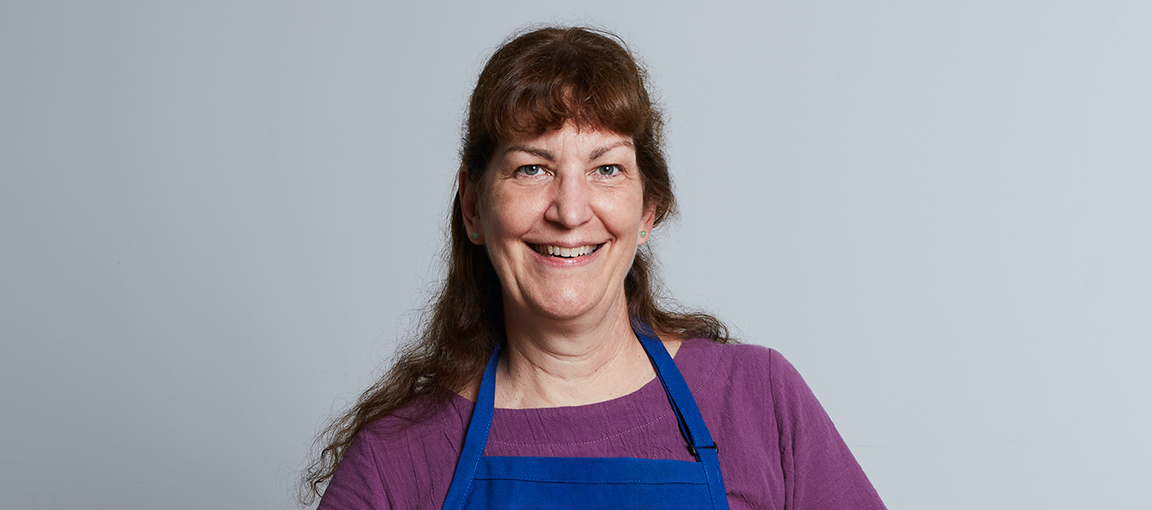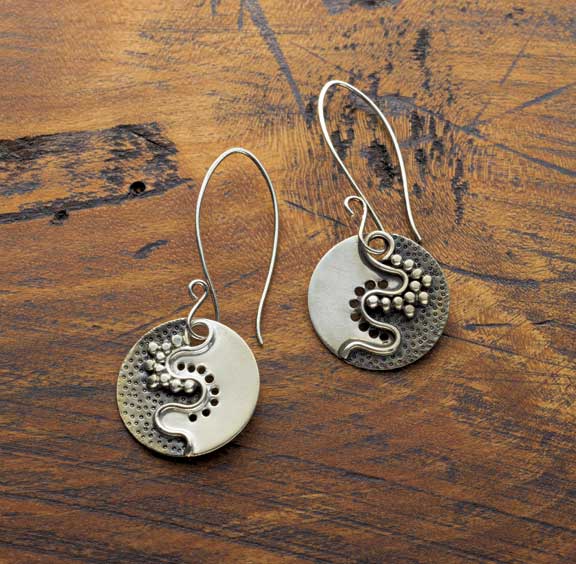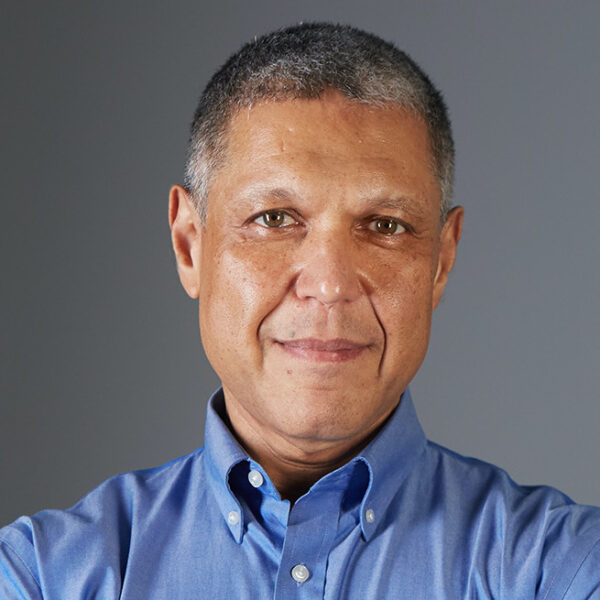We could not be more excited to announce our new Gesswein Tool Tips series with metalsmith, teaching artist, and author Helen Driggs. It’s easier to list what Helen hasn’t done. She was the Senior Editor for Lapidary Journal Jewelry Artist magazine and has published two books on jewelry making. She runs workshops for jewelers of all skill levels, writes columns for the MSJA Journal, fabricates her own creations from raw materials, and now we are very fortunate to have her as part of the Gesswein family.
Before she starts sharing her bench tips, we interviewed Helen, so you could get to know her a little better.
Could you tell us about your path to becoming a jewelry artist?
I have always made things with my hands. When I was a kid, I would tinker around in the garage with my dad using tools, bits of metal, mechanical switches, wood and wire. He was a machinist who also did carpentry and he worked at a switch manufacturing company. Dad always brought home boxes of reject hardware and parts that I thought were extraordinarily fascinating. I took bits and pieces of things apart to learn how it everything worked and spent many happy hours standing on a metal milk crate drilling holes in scrap wood using his immense shop drill press. We had so many power and hand tools to play with and it was a wonderful way to spend time. I discovered beads at age 14 and they combined so easily with the reels of copper telephone wire, brass hardware and aluminum bits I already had at hand, so jewelry making became a natural outlet for my object creation, and I just never stopped.
How does your background as an illustrator relate to your art as a jeweler?
If it weren’t for my non-love affair with math, I probably would have ended up in a science career. I majored in Illustration at art school because I really love to draw. I am one of those people who automatically picks up a pen and starts diagramming ideas out when I’m explaining complex information. Sometimes, I can’t easily access the verbal center of my brain without drawing, so information graphics seemed to be a natural choice for a career. I wound up in publishing, because at that time it was not an easy thing to find an artist who could think diagrammatically. Little did I know how important that ability would become once I started fabricating jewelry objects. I think about making something for a long time and draw everything before I make it. I’ll build it in my mind and turn it over and around again and again before I ever touch a tool.
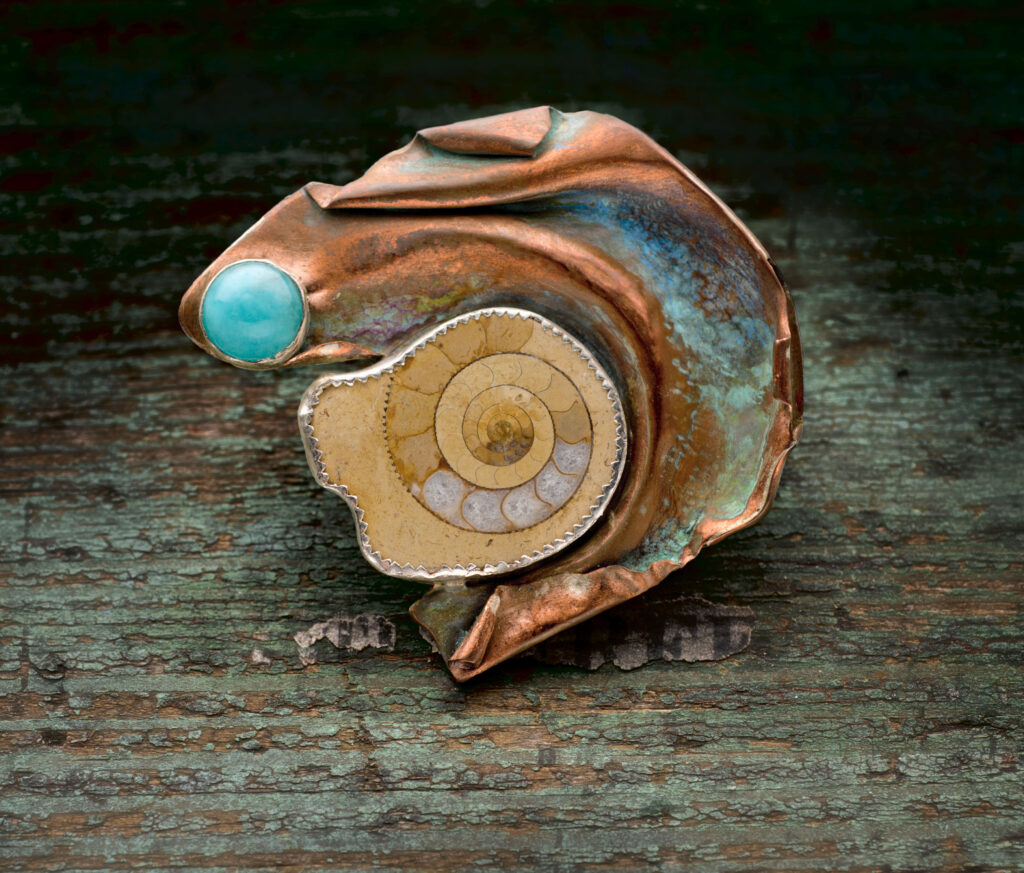
Where do you find inspiration? How has that evolved as you’ve evolved?
I still love biological science and nature, so building objects that are relational or ordered really fascinates me. I collect and organize old stuff, cast-off stuff and bits and pieces and I join them using cold connections because figuring out how to do it is the most enjoyable part of making jewelry for me. Somehow soldering something together feels so much less interesting because boom – you fire up and it stays there in a flash. So, that mental challenge of working out a mechanical solution to hold together a collection of different materials by color, texture, tone, shape or content that I feel relate to each other is just more fun to me.
Was there ever a moment when you knew that making jewelry was your calling?
I wrote a tool column for the recently departed Lapidary Journal Jewelry Artist magazine for more than a decade. Working there brought together my two passions: clear communication of complex technical information and making objects with my hands. I’d read that magazine as a kid, so it was a great gig for me, and sometimes I couldn’t believe I was doing it. Every day, gorgeous works of jewelry art by staggeringly talented independent studio jewelers came in for photography and I got to hold it, figure out how it was made and write about all of the technical processes leading up to its creation. I was taking an adult metals and jewelry class in the evenings at the time, so everything just blossomed all at once for me. Meeting those artists at craft or trade shows or through their work just set my artistic soul on fire, and I knew it was what I was put here to do.

Not only do you make jewelry but you teach others how to make jewelry, too. What inspired you to start teaching?
LOL. I was forcibly pushed into teaching by the founder of Interweave, who decided I was going to appear as “the talent” for a series of instructional jewelry making videos. It seems odd now, but back in the mid 2000s video was a new, groundbreaking way to present content on the internet. I fought that plan kicking and screaming all the way to corporate, because I believed there were so many other artists way more qualified for the task, as I was just a private editorial person working behind the scenes in a very public job. It’s funny now because those videos turned out to be quite successful, and video has become the top way we consume content on social media. Luckily, the experience proved to me that teaching was fun and I adapted to it very easily. Teaching is so different from making and such a rewarding way for me to show others just how awesome it is to fabricate jewelry with your hands and to keep the craft alive.
What is your favorite part of your workshops?
Planning for sure. I love concepting just exactly how I am going to teach somebody how to do a technical process while simultaneously fabricating a jewelry object that teaches them how to do it. It’s not an easy task to find the impossible utopia where time, skills and materials come together in a class creating a learning object that people want to make.
You’ve also authored two books on the craft: The Jewelry Maker’s Field Guide and Metal Jewelry Workshop. What compels you to be a resource for other jewelers?
I’m an information junkie. I tried to write the books I wished I could find when I was first learning on my own. There are so many books out there, but none of them told me what the tools were called, why I need them or showed me how to use them, so I tried to do that for other beginners. I often wish could rework the first book again now that I have a decade of teaching experience, because I would change so many things.
What are your favorite materials to work with at the moment?
I spent the summer teaching silversmithing at a camp in Maine, so I soldered a lot of rings. But now that I am home, I am tinkering around with a big pile of recycled printed steel, old silverware, china plates, pottery shards and fiber. I’ve been revisiting a series of boxed constructs that combine different materials that seem to belong together into square or rectangular pendants or freeform brooches. I also bought a nice parcel of Maligano Jasper from Indonesia in the early summer that I have been cabbing, because I love Lapidary and it’s so relaxing to cut rock.
Is there advice you wish someone had given you when you began to make jewelry?
Do. Not. Ever. Give. Up.
Making jewelry is not easy. You are going to make a bunch of work that you will look at in ten years and cringe at. It’s natural, it’s normal, and you have to push through it. You’ve got to teach your hands and your mind to work as a team and learn how to use hundreds of tools and dozens of materials. That is not easy, and demoralizing yourself by doom scrolling through a social media feed or comparing your work to other artists will not help you find your own beautiful and unique artistic voice. Put down your phone, pick up a tool, believe in yourself and keep on working. It will come in time.
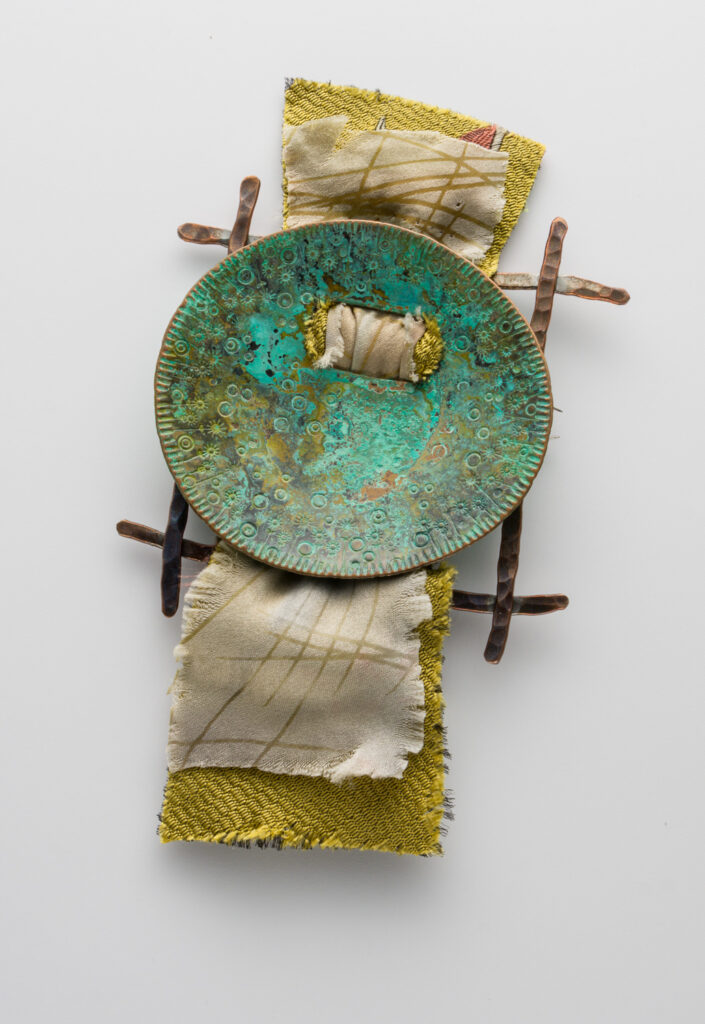 What are three of your favorite bench tools right now?
What are three of your favorite bench tools right now?
Oh, too hard – only 3?
I love my saw. I saw every day and I couldn’t imagine life without that. I really love size 4/0 blades, and I just tried some new German ones – Herkules Brand – and I adore them because they stay sharp and true forever.
Another great tool I have been using a lot lately is my PepeTools Oval Disc Cutter. For a long time I avoided using oval shapes in my work because while working for Lapidary Journal I had seen so many “oval stone on a textured silver back plate” pieces over the years that I just could not bear to use an oval. I seem to have gotten over that, so I’ve been punching vintage printed household tins into ovals for a series of pieces I plan to fabricate this fall.
One other tool I can’t live without are my 2-cut Grobet hand files in round, half round, flat, barrette and crossing. One thing I have learned is that nice edges on your metal can visually elevate your work in a magical way, and what a huge difference a nicely filed and sanded piece can have. Edges bring that professional finish to your jewelry, so never neglect them.

